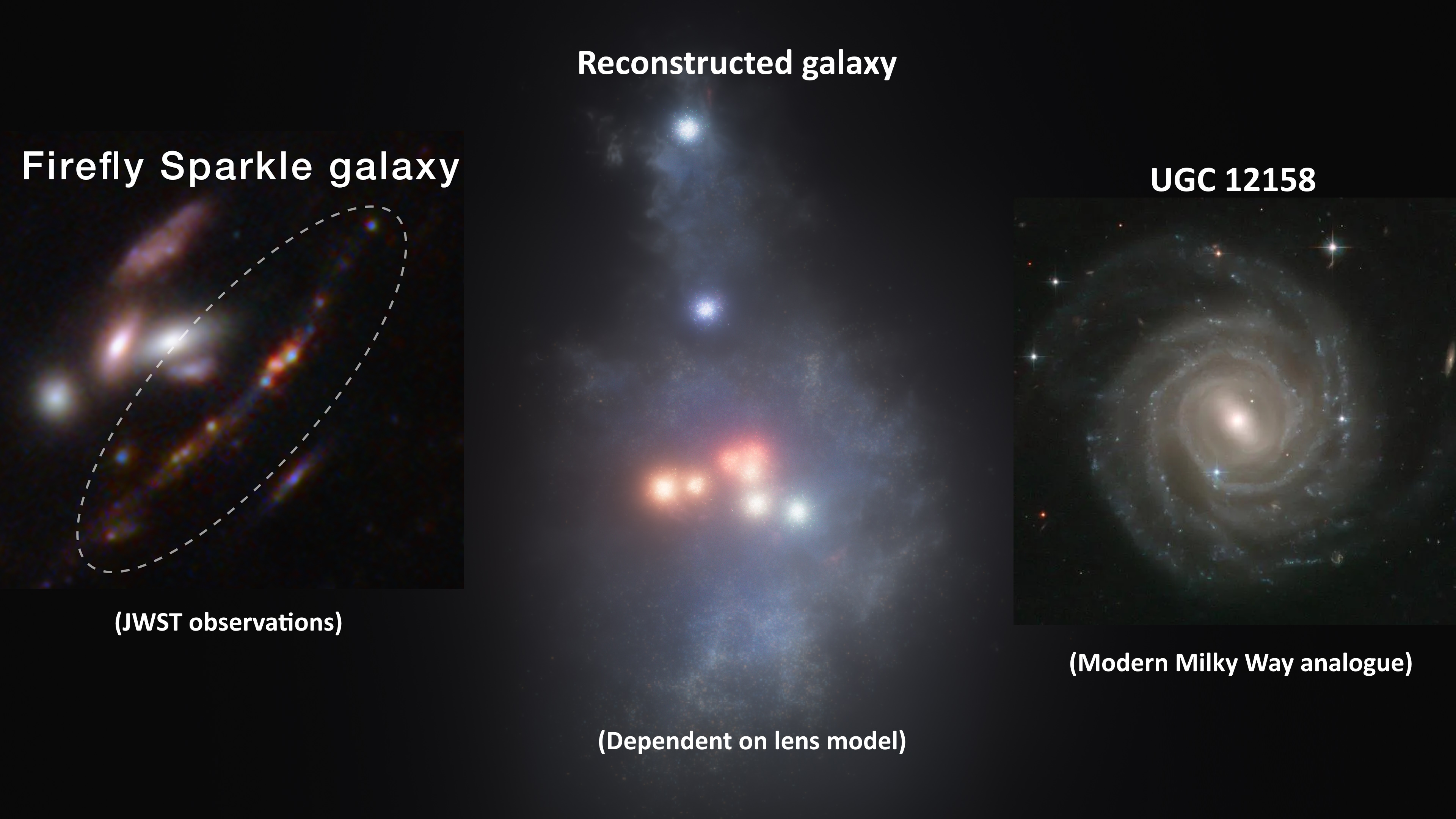What Was It Like When The First Stars Died?

For 100 million years, there was only creation in the Universe. Meet our first moments of destruction.
The cosmic story that gave rise to us is a story rife with creation and destruction. At the start of the hot Big Bang, energetic particles, antiparticles, and quanta of radiation were created. Fractions-of-a-second later, most of the particle-antiparticle pairs had annihilated away. Atomic nuclei were fused together, neutral atoms formed, and gravitation pulled matter together into clumps. Eventually, some of the largest clumps collapsed, creating the first stars.
Yet these stars were overwhelmingly massive: 25 times the typical mass of stars we create today. The more massive a star lives, the shorter its lifespan, meaning that these very first stars didn’t live for long. The death of the first stars was absolutely necessary to give rise to the Universe as we know it today. Here’s the cosmic story you haven’t heard.
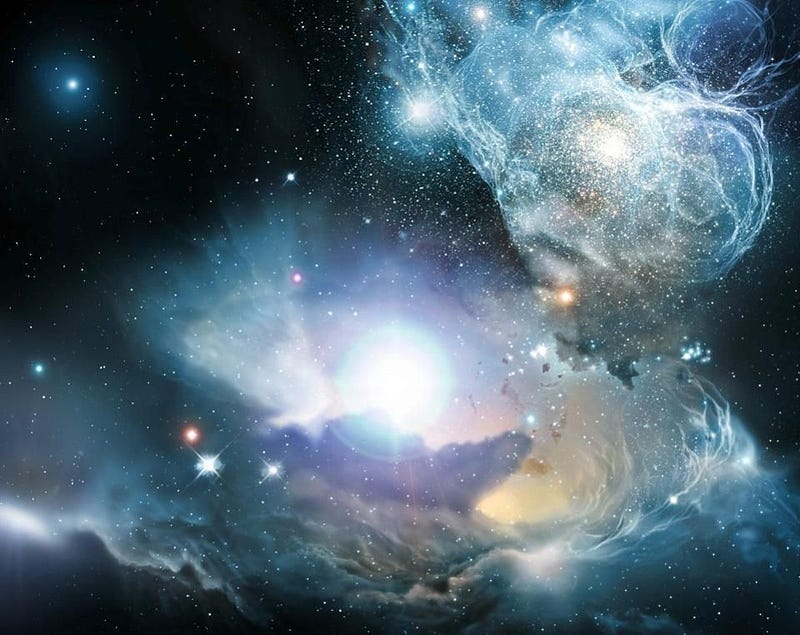
In order to form stars, the gas you’re going to make it out of needs to collapse. But gravitationally collapsing means you have to radiate energy away; collapsing turns potential energy into kinetic energy, which causes normal matter to heat up. Today, heavy elements are the best energy-radiators that we have, which means we can collapse efficiently, and form all sorts of stars.
Early on, however, there were no heavy elements, since those only arise from stars in some way. The first stars, therefore, can only be made out of large clumps of matter that have enough mass to overcome this heat. This is why the first stars are very large: 10 solar masses on average, with many stars in the hundreds or even reaching 1,000 solar masses.
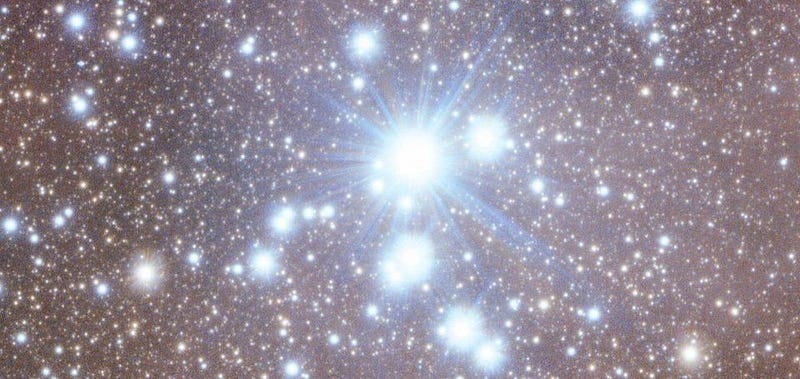
But this leads us to the Blade Runner conundrum. The more massive a star is, the brighter it burns, but the shorter it lives. While a star like our Sun might live around 10 billion years before reaching the end of its core fuel, these early stars live mere millions of years before they meet their demise. Their cores fuse hydrogen into helium at an incredibly rapid pace, giving off tens of thousands (or more) the luminosity of our Sun continuously.
For a star ten times the mass of our Sun, that process might last only around 10 million years before running out of hydrogen fuel. At that point:
- the core contracts and heats up, fusing helium into carbon,
- when it runs out of helium, it heats up and fuses carbon into oxygen,
- and then oxygen into neon, on up to magnesium, silicon, and sulfur,
- eventually reaching iron, nickel, and cobalt,
- and then ending in a spectacular supernova explosion.

The cycle of nuclear fusion in massive stars creates a large amount of heavy elements in the periodic table, which then get blasted off back into the interstellar medium at the moment of the supernova’s detonation. What’s left behind, of the core, is typically a neutron star: a collapsed mass that’s greater than our Sun, but no bigger than perhaps a dozen miles from end-to-end.
In these dense, early environments, neutron star-neutron star collisions should be relatively common, at least, compared to the low rates we think we have today.
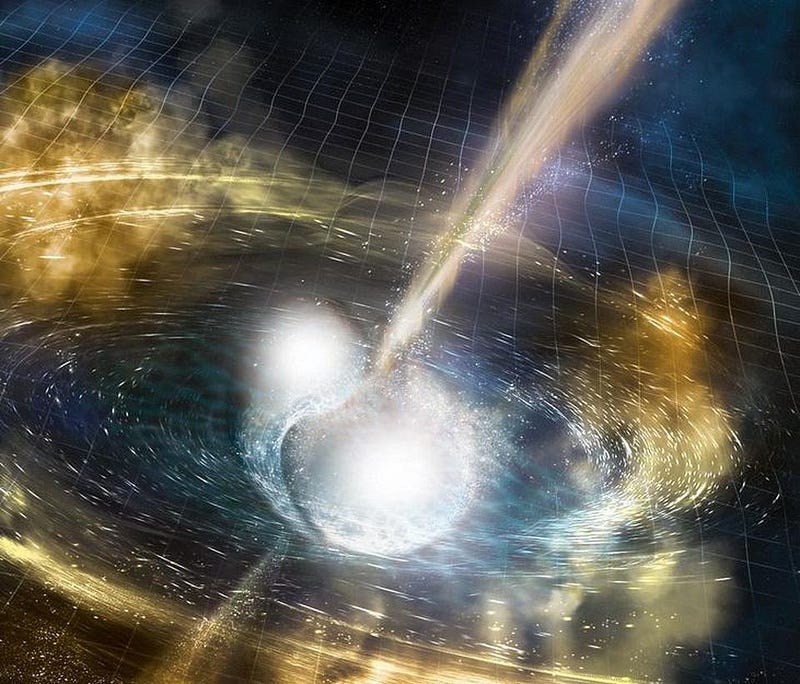
When these neutron star collisions occur, they give rise to either a larger neutron star or a black hole with about 95% of their mass, which you might anticipate. But these neutron star collisions also result in runaway, explosive reactions, causing the emission of gravitational waves, neutrinos, electromagnetic radiation of all types, and the expulsion of large amounts of heavy nuclei. These nuclei are both stable and unstable, and include elements that are far heavier than uranium and plutonium.
In combination with supernovae, neutron star-neutron star mergers give rise to the full suite of elements that make up the periodic table, including the heaviest ones.
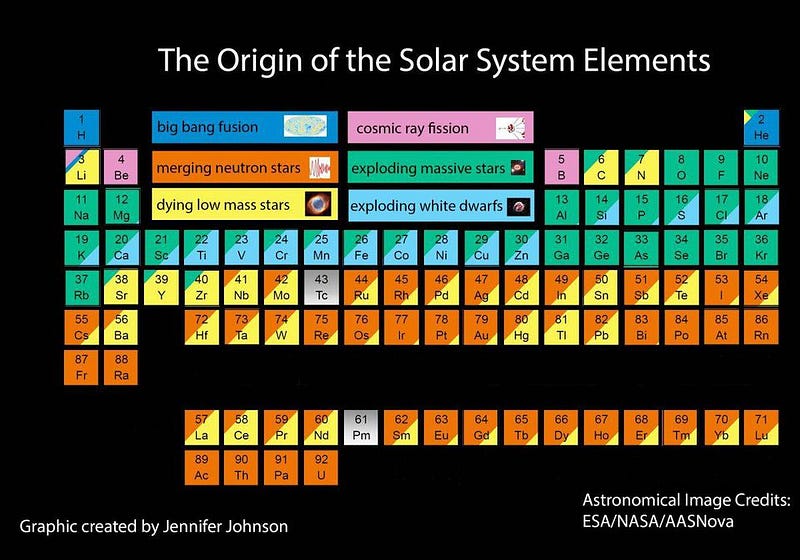
But these stars that live for, perhaps, 10 million years or so are actually the longer-lived among the first stars. There are stars hundreds or even a thousand times as massive as our Sun that get created here, and they burn through their fuel even more quickly. Shining as bright as millions or even tens of millions of Suns, each one has a unique fate.
Inside them, there are three possibilities for what might occur, dependent on mass.
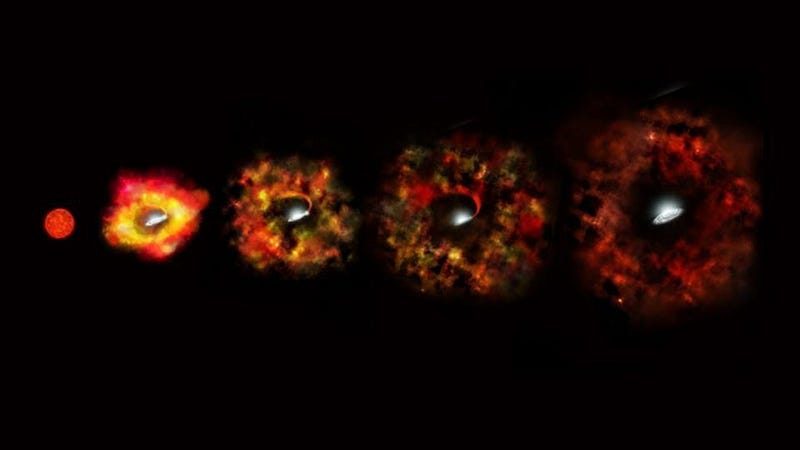
One is just a higher-mass analogue of what you’d expect from the earlier supernovae: a massive supernova that leaves only a black hole, rather than a neutron star, behind. The core of a supernova collapses, and in most cases, that’s going to lead to a neutron star. But there’s a limit, somewhere between 250% and 300% the mass of the Sun, to what a neutron star can achieve before it collapses under its own gravity.
When it crosses that threshold, the neutron star collapses all the way into a black hole: the second most common fate for the first stars.
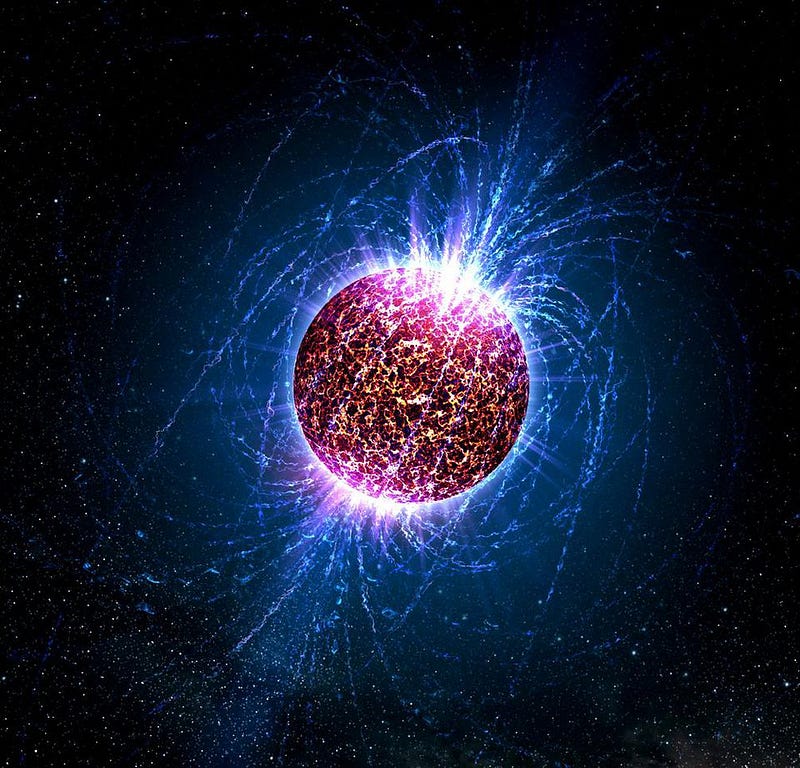
At even higher masses, however, the temperatures inside the star reach such great levels that a special process begins to take place. There’s enough free energy that, for the photons flying around inside the star’s core, there’s the possibility that they can spontaneously form particle-antiparticle pairs. Two photons can spontaneously transform, under these conditions, into an electron and positron, if energies are high enough.
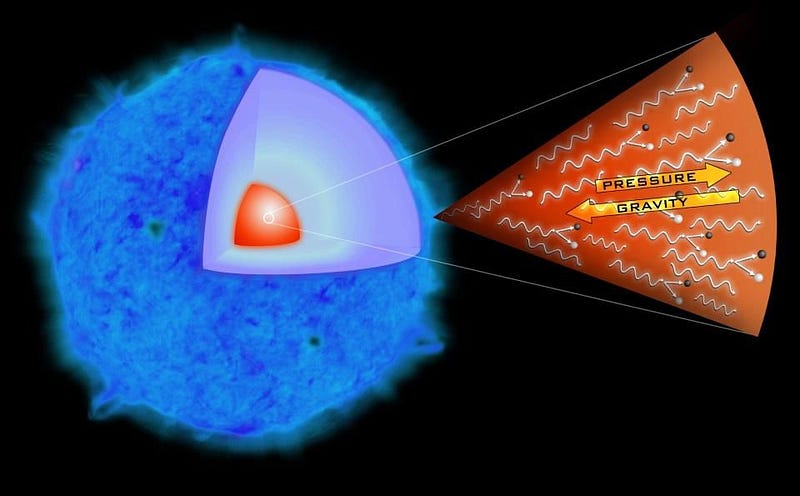
This carries with it some new physics: whereas the radiation pressure from the photons was what held the star up against gravitational collapse, the loss of photons means a loss of pressure, and the star begins to collapse further. As it does, the temperature goes up, making it more likely that photons will convert into electron-positron pairs. This becomes a runaway process, and the star’s core collapses entirely.
This process is then known as a pair-instability supernova, or, if you prefer colorful language, a hypernova explosion. These are extremely rare in the modern Universe, but the first stars should have had many instances of this type of cataclysm. The less massive pair-instability supernovae will lead to a black hole at the core, while blowing off their outer layers, while the more massive ones will destroy the star entirely, giving rise to a bizarrely-enriched section of the interstellar medium where they occurred.
It’s theorized that stars of different masses will reach the pair-instability threshold at different times in their life cycles, making the elements they expel and enrich the Universe with a variable that is not yet well-understood.
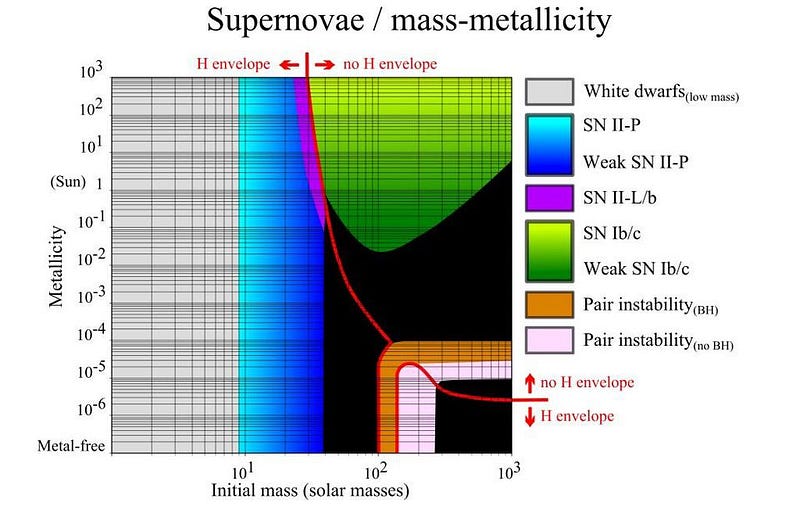
Finally, stars of either severely extreme masses or that undergo just the right set of processes could directly collapse into a black hole. There doesn’t need to be a runaway fusion reaction; there might not be an explosion; the mass could, all at once, just overcome the radiation coming from its central region. Once an event horizon forms, collapse down to a black hole is inevitable.
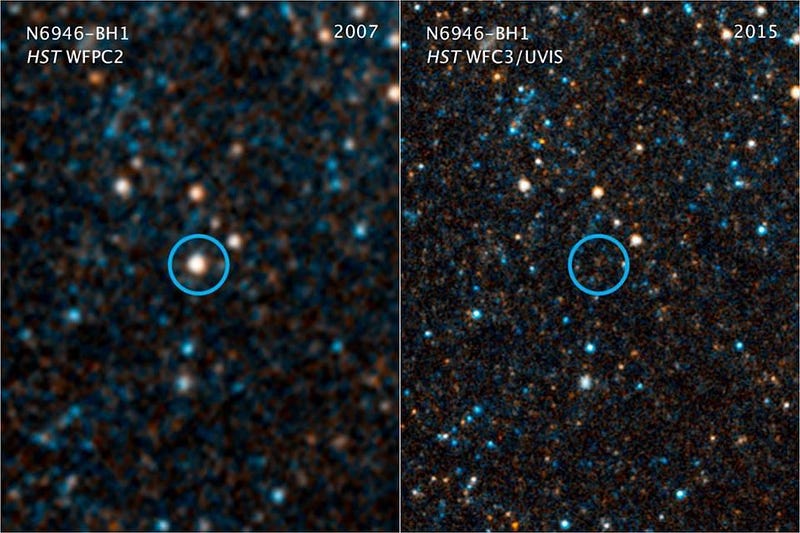
It’s theorized that this is the origin of the seeds of the supermassive black holes that occupy the centers of galaxies today: the deaths of the most massive stars, which create black holes hundreds or thousands of times the mass of the Sun. Over time, mergers and gravitational growth will lead to the most massive black holes known in the Universe, black holes that are millions or even billions of times the mass of the Sun by today.
It took perhaps 100 million years to form the very first stars in the Universe, but just another million or two after that for the most massive among them to die, creating black holes and spreading heavy, processed elements into the interstellar medium. As time goes on, the Universe, at long last, will begin to resemble what we actually see today.
Further reading on what the Universe was like when:
- What was it like when the Universe was inflating?
- What was it like when the Big Bang first began?
- What was it like when the Universe was at its hottest?
- What was it like when the Universe first created more matter than antimatter?
- What was it like when the Higgs gave mass to the Universe?
- What was it like when we first made protons and neutrons?
- What was it like when we lost the last of our antimatter?
- What was it like when the Universe made its first elements?
- What was it like when the Universe first made atoms?
- What was it like when there were no stars in the Universe?
- What was it like when the first stars began illuminating the Universe?




